
STEPHAN HEUNIS
PROJECT: QUALITY OF REAL-TIME fMRI: NOVEL SOFWARE, SEQUENCES and SIGNALS
Breaking down the complexities of the human mind in order to understand and develop treatments for mental health conditions is an ongoing challenge in neuroscience and global healthcare. Real-time functional magnetic resonance imaging (fMRI) is an advanced method that shows promise in allowing us to probe and explore the human mind in a virtual, real-time and non-invasive manner. But more can be done to understand and improve the quality of real-time fMRI, using new MRI sequences, new processing methods, software development, and further experimentation.
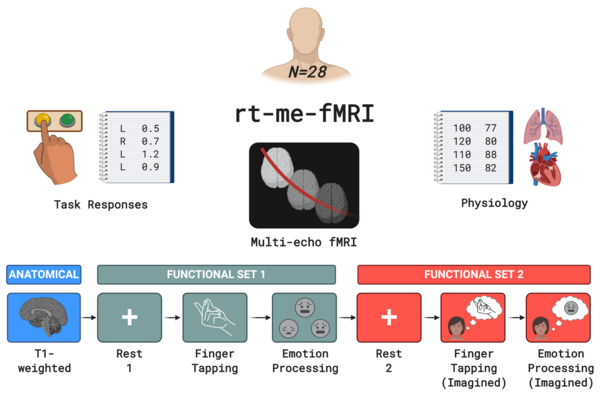
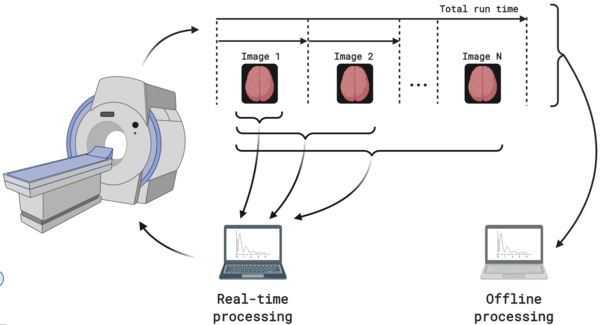

In a fruitful collaboration between Philips research, Kempenhaeghe and TU/e, our team developed new MRI sequences and accompanying real-time processing algorithms to increase the sensitivity of the blood oxygen level-dependent (BOLD) signal measured with fMRI. Identifying the potential and novelty of real-time multi-echo analysis, we established a real-time hardware integration to allow real-time multi-echo analysis, we created open-source software tools for real-time fMRI quality control and visualisation, and we contributed to community standards for automated quality control and reporting. This project also resulted in a curated and publicly available multi-echo fMRI dataset, on which we demonstrated the superiority of novel multi-echo processing algorithms for real-time BOLD sensitivity increases. This project has provided the necessary technical backdrop for the next step: a clinical trial.
Journal articles relating to the work:
- Neu3CA-RT: A framework for real-time fMRI analysis. doi.org/10.1016/j.pscychresns.2018.09.008
- The effects of multi-echo fMRI combination and rapid T2*-mapping on offline and real-time BOLD sensitivity. doi.org/10.1101/2020.12.08.416768
- rt-me-fMRI: A task and resting state dataset for real-time, multi-echo fMRI methods development and validation. doi.org/10.1101/2020.12.07.414490
- Quality and denoising in real‐time functional magnetic resonance imaging neurofeedback: A methods review. doi.org/10.1002/hbm.25010
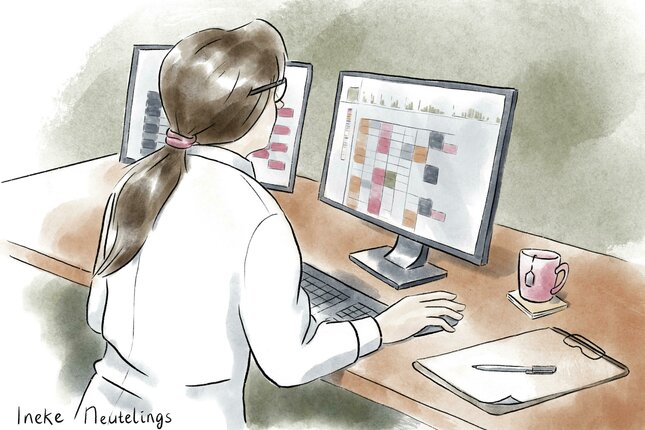
DENNIS DINGEN
PROJECT: REGRESSION-EXPLORER: INTERACTIVE EXPLORATION OF LOGISTIC REGRESSSION MODELS WITH SUBGROUP ANALYSIS
RegressionExplorer is developed as part of Dennis Dingen’s Ph.D. project, which aims to improve clinical researchers' workflow for analyzing their data. In this project, several e/MTIC stakeholders joined forces to make the latest (data science) techniques readily available for clinical researchers. RegressionExplorer enables them to explore logistic regression models in a visual interactive user-interface.
The development of RegressionExplorer took place in close collaboration with clinical researchers of the Catherina Hospital in their daily working environment. As a result, it became apparent that efficient data exploration is essential, minimizing the time-consuming interactions necessary for dealing with traditional statistical software packages. Particularly during the exploratory stage, researchers benefit when they can obtain comprehensive insights into the data quickly to determine, for instance, what features are most important and whether subgroups of patients react differently to treatments.
RegressionExplorer has already been used to support various clinical studies in the Catharina Hospital. Furthermore, at the Kempenhaege Epilepsy and Sleep Center, RegressionExplorer is currently used to complement a formal clinical study to compare different medication types. The team will submit their report to a clinical journal soon, highlighting the added value of using tools designed for exploratory data analysis next to traditional clinical research.
Dingen, D., van 't Veer, M., Houthuizen, P., Mestrom, E. H. J., Korsten, E. H. H. M., Bouwman, A. R. A., & van Wijk, J. (2019). RegressionExplorer: Interactive exploration of logistic regression models with subgroup analysis. IEEE Transactions on Visualization and Computer Graphics, 25(1), 246-255.
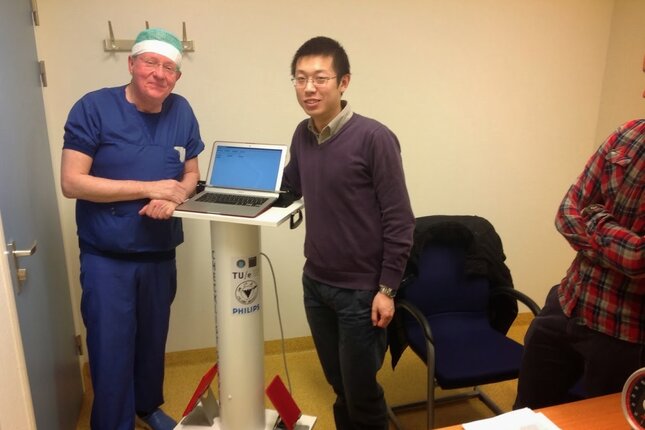
SHAN NAN
PROJECT: DYNAMIC CHECKLISTS : DESIGN , IMPLEMENTATION AND EVALUATION
Checklist is a commonly used tool in our daily life to prevent forgetfulness. Checklists are increasingly applied in healthcare to improve patient safety by providing care-givers essential reminders to critical activities. However, this idea has not yet been widely accepted in daily practice because current paper checklists requires their users to look for various information from different places in separate information systems without considering patient’s specific condition and the progress of care processes. Since 2014, a group of scientists have been working together on solving the problems. They are from Catharina Hospital, TU/e, Philips research, and collaborating with Zhejiang University in China and 2 top-level Chinese hospitals.
With the expertise of clinical informatics, workflow management, clinical medicine, and industry design, they worked together and invented a care-process oriented and patient context-aware checklist name TraceBook. This innovative checklist can be easily integrated with hospital information systems so that it can collect all the patient information data available in a general view to the care-givers. Furthermore, TraceBook uses clinical rules to analyse patient data and detect the abnormalities in the care process, so that only the most relevant and important items are provided to care-givers to avoid alert fatigue.
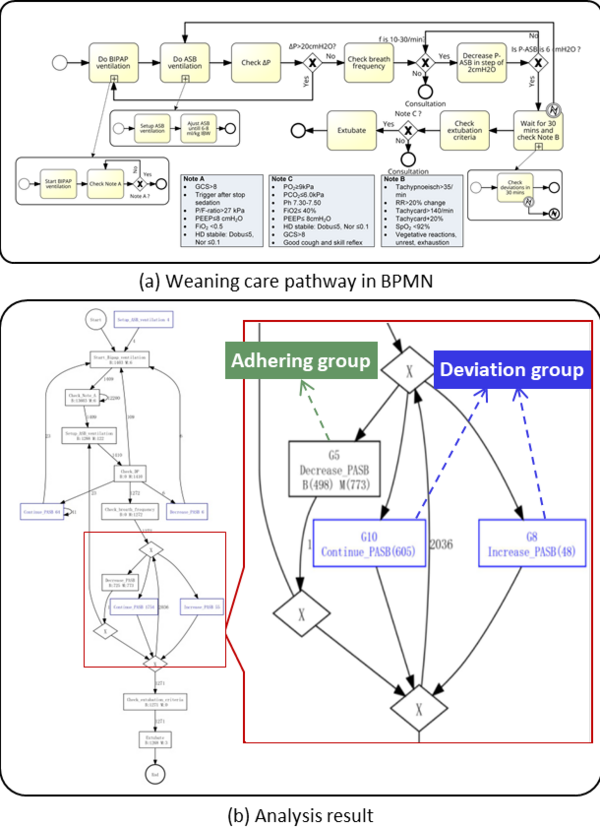
HUI YAN
PROJECT: DEVIATIONS ANALYSIS OF CARE PATHWAYS USING OPTIMAL ALIGNMENT COMPUTED VIA COORDINATE SYSTEMS
Standardized care processes are useful to reduce practice variations, such as the overuse and waste of healthcare services. However, the highly complex and ad-hoc characteristics of healthcare processes make the standardization effort prone to failure. The implementation of care pathways in practice has shown low completion rates and low compliance. Analysing the deviations of actual implementation to care pathways aims at providing continuous improvements for care pathways.
Manual and semi-automated approaches for analyzing deviations suffer from effort-intensiveness, lack of objectiveness, and low quality. As information technologies are being widely used in hospitals, data capturing the implementation of care pathways are being recorded. We aim at developing a cost-efficient method that takes an entire care pathway and data as input and outputs what deviated where. By modeling care pathways in BPMN language and transforming the data into event logs, we developed a novel algorithm based on the coordinate systems to compute the optimal alignments between the care pathways and event logs. Applying process discovery techniques on the optimal alignments yields a new process model containing what deviated where by whom.
The what, where and whom information together provide cause inferring and redesign suggestions for improving care pathways. Two real-life case studies, unstable angina from a Chinese hospital and weaning protocol from MUMC+, were carried out. We found that some additional use of medications is associated with co-morbidity. Care pathways were redesigned using the evidence generated from data.
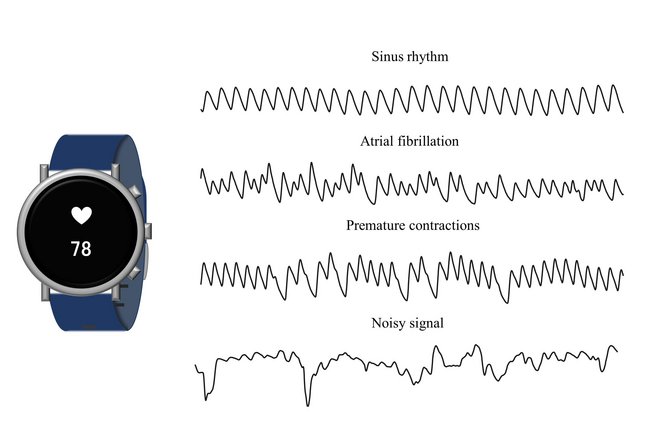
LINDA EERIKÄINEN
PROJECT: CARDIAC ARRHYTHMIA MONITORING FROM CLINICAL SETTING TO DAILY LIFE
Atrial fibrillation (AF) is a cardiac arrhythmia that increases the risk of stroke and heart failure, and therefore diagnosis at an early stage is important. However, this can be challenging if no symptoms are present. This e/MTIC research project focused on detection of AF with wrist-worn wearables.
Long-term continuous monitoring could be helpful for early detection of AF but in the current clinical practice it is only possible with implantable devices. Photoplethysmography (PPG) is an unobtrusive optical measurement modality that can be used e.g. for measuring heart rate. In this project, a data collection was conducted by monitoring patients from the Catharina Hospital both in the hospital and in daily life with a PPG-device at the wrist. The collected data was used for developing methods to accurately detect AF from PPG and to gain understanding how the conditions in daily life may impact the detection accuracy.
This project was a collaboration between TU/e, Catharina Hospital, and Philips Research. The e/MTIC ecosystem made it possible to easily exchange knowledge on data analysis, measurement technology and clinical practice. The results of this project are presented in the PhD thesis that was defended on October 14, 2020.
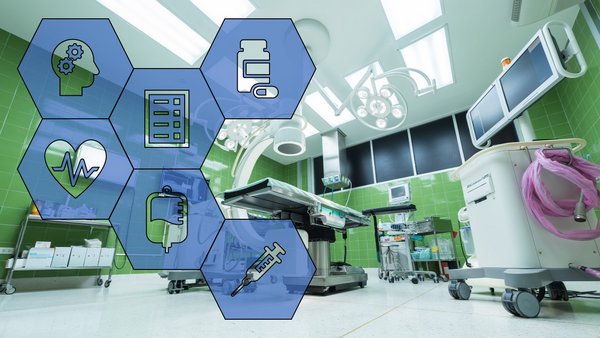
TOM BAKKES
PROJECT: PREDICTION OF POST-OPERATIVE PATIENT DETERIORATION
Post-operative patient deterioration on the ward is a great risk for patients, especially since patients are not monitored as closely when they are on the ward. Therefore, it is important to put high risk patients on high acuity facilities like the intensive care unit (ICU).
In current clinical practice the post-operative destination of the patient is primarily based on pre-operative assessments. However, events during surgery might influence the risk for complications after surgery. In this study, we aim at developing a clinical decision support system able to determine more accurately which patients have the higher risk of post-operative deterioration, by looking at variables obtained during the whole perioperative process.
In collaboration with the Catharina hospital, data from surgeries conducted from 2013 to 2017 was collected. Unplanned ICU admissions were used as an indication of severe post-operative patient deterioration. The data was used to observe the differences between patients with a healthy recovery and those with an unplanned ICU admission. Significant variables were used to develop predictive models for the prediction of patient deterioration, utilizing both statistical and machine learning methods. Initial results have been promising, and in the future these models could be used in the allocation of ICU beds.
Patients with a high risk of deterioration after surgery are preferably placed on high acuity facilities which can provide more extensive monitoring. Therefore, with this project we investigated whether variables collected during the perioperative process could provide insight into the risk of post-operative deterioration, thereby assisting in the allocation of high acuity facilities.
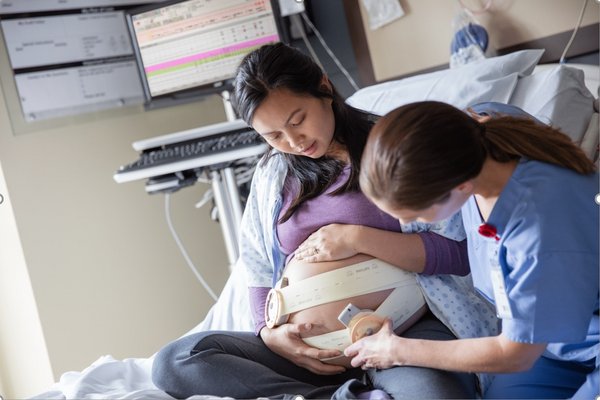
PAUL HAMELMANN
PROJECT: TOWARDS OPERATOR-INDEPENDENT FETAL HEART RATE MONITORING USING DOPPLER ULTRASOUND
Fetal heart rate (fHR) monitoring is a standard method to assess fetal well-being before and during labor. However, the most common fHR measurement technique, Doppler ultrasound, often suffers from severe periods of signal loss. In this e/MTIC research project, new methods have been developed to avoid the occurrence of fHR signal loss.
Cardiotocography (CTG), which consists of the simultaneous monitoring of the fetal heart rate (fHR) and uterine contractions (UC), is a standard method to assess the fetal well-being before and during labor. By monitoring changes in the fHR in response to UCs, information on the regulating function of the autonomous nervous system, and hence on the health-status of the fetus, can be obtained.
In clinical practice, the de-facto standard technology for fHR monitoring is based on Doppler Ultrasound (US), in which a US transducer is fixed on the maternal abdomen for continuous monitoring. For reliable fHR monitoring, it is essential that the fetal heart lies within the US beam of the US transducer. However, due to fetal movement or due to a displacement of the US transducer on the maternal abdomen, the fetal heart location (fHL) relative to the US transducer can change, leading to frequent periods of signal loss. Consequently, engagement of clinical staff is needed to repeatedly reposition the US transducer; this requires experience and drastically affects the clinical workflow. This PhD research, defended on 9th of June 2020, aims at overcoming the challenges associated with US transducer positioning.
In this e/MTIC collaboration between the Department of Electrical Engineering (BM/d, SPS) at TU/e, the Department of Obstetrics and Gynecology at Máxima MC, Veldhoven and the Department of Family Care Solutions at Philips Research, novel methods have been developed to enable operator-independent fHR monitoring.

EVELINE MESTROM
PROJECT: AUTOMATED EARLY WARNING SCORING SYSTEM IN A SURGICAL WARD
The Philips IntelliVue Guardian Solution was implemented on a high care surgical ward to facilitate the completion of the early warning score and provide clinical decision support. An exemplary e/MTIC project where new technology is tested in a real world hospital setting and where collaboration was a key to success.
Patient deterioration is frequently encountered in the surgical ward. Early warning scoring (EWS) systems have been developed as an objective bedside tool to help clinicians identify patients at risk of adverse events. Currently, the calculation of this score is time consuming for nursing staff and therefore frequently incomplete.
The aim of this retrospective before-and-after cohort study was to investigate whether an automated MEWS system on a surgical high dependency unit (HDU) had a positive effect on clinical practice, in terms of improved documentation of vital signs and complete EWS assessments and EWS protocol adherence. Thanks to the collaboration with Philips, we were able to implement ‘the Guardian’ as an automated EWS system. As clinicians, we implemented the Guardian in daily workflow and provided clinical interpretation of the data. After completion of the study, we found that the Guardian improved the number of fully completed EWS assessments, registered vital signs, and adherence to the EWS hospital protocol. These are important findings for future clinical decision support systems and early deterioration detection.

ROHAN JOSHI
PROJECT: TOWARDS AUTOMATED SOLUTIONS FOR PREDICTIVE MONITORING OF NEONATES
The goal of this work has been to develop a methodological framework for the automated detection of clinical deterioration in preterm infants, both acute deterioration such as those reflected by critical patient monitor alarms as well as longer-term deteriorations such as late-onset neonatal sepsis. The primary idea behind predictive monitoring is to offer clinicians a longer window of opportunity for pre-emptive therapeutic action that, in turn, can be expected to improve clinical outcomes. Within the e/MTIC ecosystem, I particularly appreciated the collaboration with Maxima Medical Center (MMC). MMC offered proximity to and interaction with clinicians, primarily neonatal nurses and neonatologists. Routine interactions with clinicians, not only offered invaluable clinical insights but also helped optimize study designs at an early stage. This helped ensure that throughout, there was an effort to incorporate into the design of technological solutions, both, the prevalent approach of clinicians in interacting with technological infrastructure as well as their clinical intuition – often an important component of medical decision-making.
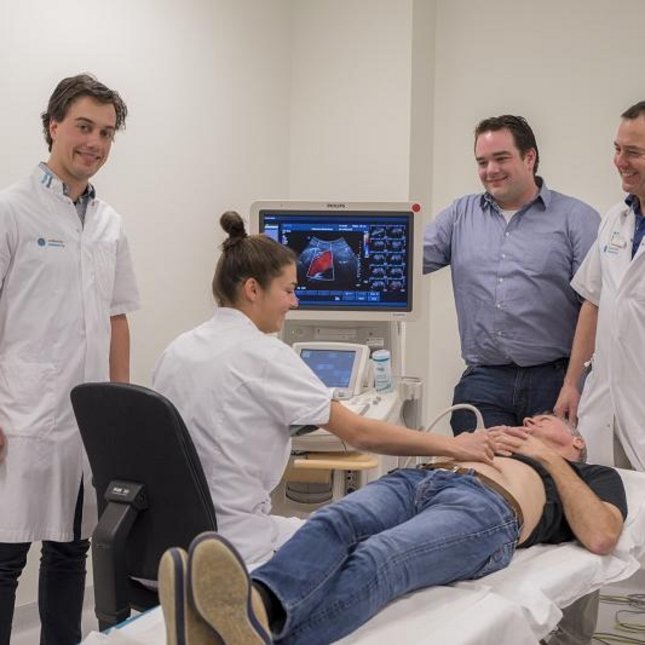
EMIEL VAN DISSELDORP
PROJECT: MECHANICAL ANALYSIS OF AORTIC ANEURYSMS USING 3D ULTRASOUND
A localized dilation of the aorta, known as aneurysm, can result in a life-threatening hemorrhage when ruptured. Rupture of the aneurysm can be avoided by preventive surgery, however this is not without risks. Within this e/MTIC framework, we are working on biomechanical metrics that can predict if and when an aneurysm should undergo surgery. In this close collaboration, a method is developed to measure non-invasively the stiffness of the aorta and the stresses in the aortic wall using 3D ultrasound. The rationale behind these measures lie in biomechanics. An aneurysm will not rupture because of its size, but because the stresses in the vessel wall outweighs its strength. Similar to a balloon that is overinflated. The stiffness indicates to what extent the aneurysm can still deform in an elastic fashion, and the aortic peak stress indicates the location and amount of stress that acts on the aneurysm wall. Since vascular specialists want to be able to measure these additional metrics of the vessel wall quickly and regularly, this new method uses 3D ultrasound. This technique uses no radiation, is cheap and is easy to use. Moreover, using this close collaboration in the e/MTIC environment this technique could directly be implemented in a large clinical study in the Catharina Hospital. The first results are promising and clinical study with more than 300 patient is still on going.
MYRTHE VAN DER VEN
PROJECT: PICASSO
In 2020 the PICASSO project will be rolled out, in which six engineering PhD students will be appointed to co-develop novel technological solutions in perinatal medicine, cardiovascular medicine and sleep medicine. The PICASSO project proposed here seeks to leverage technological advances in pathophysiological modeling, unobtrusive sensing, monitoring and data analysis to enable earlier recognition, mitigate progression and improve treatment of perinatal, cardiovascular and sleep-related diseases. The project covers two perinatal diseases (gestational diabetes mellitus, pregnancy-induced hypertensive disorders), multiple cardiovascular diseases (cardiac arrhythmias, coronary artery disease mitral valve disease), and two sleep-related diseases (obstructive sleep apnea, insomnia). Cardiorespiratory risk factors are a common denominator of most of these diseases and accordingly technologies for assessment of these risk factors figure prominently throughout the project. The general approach in PICASSO is to co-develop novel technological solutions in a controlled clinical environment, and to subsequently refine and validate them in extramural and at-home settings, immediately followed by deployment in the healthcare system with the aim to increase effectiveness at lower costs in combination with lower patient burden and higher patient quality of life. All projects within PICASSO are in collaboration with Philips and at least one of the three hospitals. The engineering PhD students will work closely together with clinical PhD students.
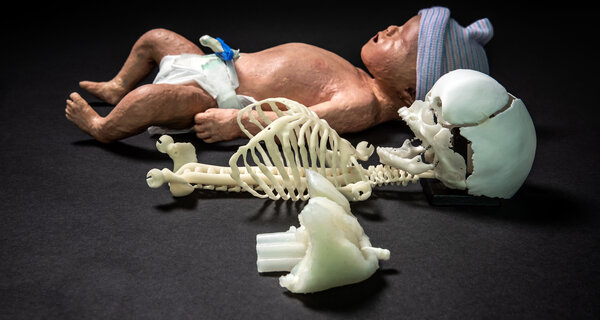
Mark Thielen
Project: ReVive- designing the newborn life support manikin
My research focused on improving the performance of neonatal CPR through improving the current CPR training manikins. The approach to achieve this goal was to replicate the neonate based on actual MRI imaging of a term neonate. By doing this it is possible to replicate the entire body with essential functional CPR organs (such as the rib cage, heart with circulation, and lungs for ventilation). Within this body we can monitor the performance of CPR on the neonatal manikin so that a higher degree of performance feedback can be provided.
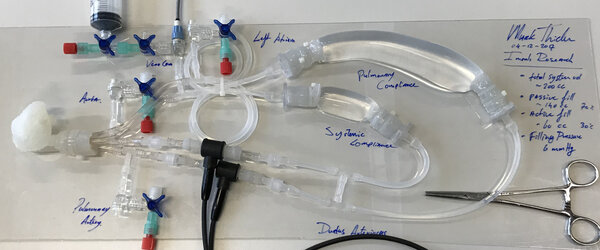
Simultaneously the haptic experience of training CPR on this manikin was made more realistic by building this replica. For this research it meant that I had to have access clinicians and nurses with real life CPR experience (Maxima MC Hospital), MRI images of the neonate to build a replica manikin, the expertise in sensor systems to monitor the behavior inside the new manikin design’s organs (TU/e), the equipment and expertise to replicate chest compressions in the lab using machinery (TU/e), and the expertise in CPR support equipment (Philips). Without the combination of access to these three parties within the e/MTIC ecosystem, I would have never been able to push the boundaries of CPR manikin design.
Lieke Hermans
Project: Modeling sleep onset misperception in insomnia
Many people with insomnia underestimate their amount of sleep compared to objective sleep recordings. This phenomenon is called ‘sleep state misperception’. Sleep state misperception is possibly caused by certain measurable characteristics of sleep, which may impair the sleep quality and cause parts of the sleep to be perceived as wake. The aim of my PhD project is to identify such characteristics. Within the e/MTIC framework, we set up a data collection protocol, in which Philips, Kempenhaeghe and TU/e worked together to measure sleep at home in people with insomnia. This collaboration resulted in a very useful dataset with a lot of different information, including polysomnographic measurements, unobtrusive sleep measurements, subjective sleep information from the participants and information about psychological mechanisms of sleep. This information can be used and combined for many different research purposes. Additionally, the e/MTIC ecosystem allows me to efficiently work together with people from different parties, who all have their own valuable expertise about sleep. We used our combined knowledge to develop a model to quantify the influence of sleep fragmentation on sleep onset misperception. The validation of this model was described in our most recent research article, titled ‘Modeling Sleep Onset Misperception in Insomnia’.
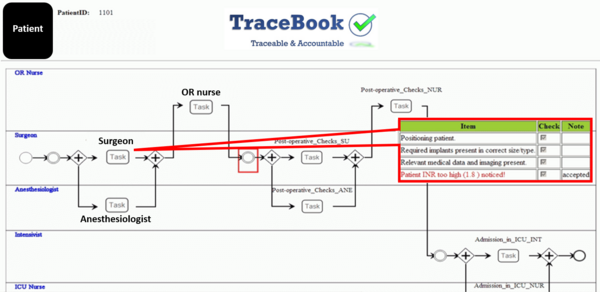
Ashley De Bie Dekker
Project: TraceBook
TraceBook is a new innovative clinical decision support system (CDSS) that aims to prevent medical errors by presenting the entire care process of a patient more clear (Figure 1), while improving guidelines compliance by healthcare workers. This project could only be realized thanks to the collaboration of engineers, user-interface experts, and clinicians within e/MTIC. Since the start of this project in 2014, the collaboration of various experts from the involved organizations resulted in a new CDSS being built from scratch which already has endured two clinical studies with favourable outcomes in an Intensive Care Unit setting. In these studies we tested the process-oriented and context-aware smart dynamic checklists of TraceBook. These building blocks of TraceBook contain several innovations.
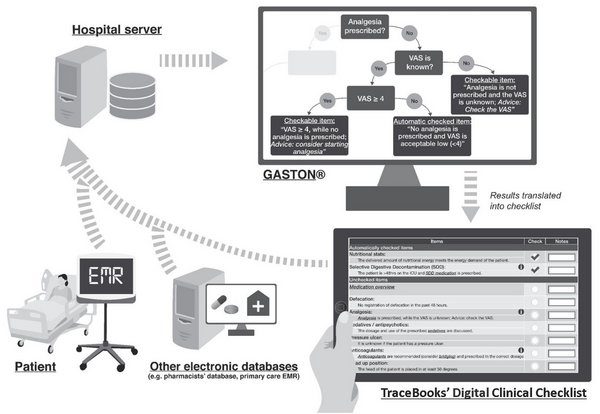
First, the CDSS is able to gather and integrate information from different data sources (Figure 2). Second, the rule engine within the CDSS prepares personalized digital checklists containing items relevant to the care of each specific individual patient. Therefore are both the content and format of the checklist variable, while the output of each completed checklist can act as input for future checklists. In addition, TraceBooks’ checklist helps the users to complete the checklist by displaying guideline recommendations upon request, and highlighting relevant data from the medical databases for extra attention such as laboratory results. Finally, automated checks are feasible when healthcare professionals locally agree that a rule can be checked automatically. In the future, the format of TraceBooks’ checklists can also be used to present the findings of artificial intelligence driven clinical decision support systems.
Marina Nano
Project: Cardiovascular measures for insomnia monitoring
Sleep problems, in particular difficulties initiating and/or maintaining sleep are becoming more prevalent and one third of the population worldwide is affected occasionally by insomnia symptoms. The prevalence of Insomnia disorder is around 10%. My PhD project is about developing wearable solutions to understand more about the mechanisms of insomnia. My PhD, as a collaboration between three institutions with expertise in very different disciplines, naturally led to different expectations and goals. I had to develop my negotiating and communication skills to resolve disagreements and present options that appealed to all my supervisors. Having different perspectives and opinions might come with some challenges but also broadens your view. The e/MTIC ecosystem gives me the opportunity to meet specialists who have long experience working with sleep and enables me to perform my research in real conditions such as the data collection that we performed at patients home after the joint efforts of Kempenhaeghe, Philips Research and TU/e. Our efforts to understand more about Insomnia disorder and its mechanisms are reflected in our recent paper that we published at Frontiers in Neuroscience with title “Lying Awake at Night: Cardiac Autonomic Activity in Relation to Sleep Onset and Maintenance”.